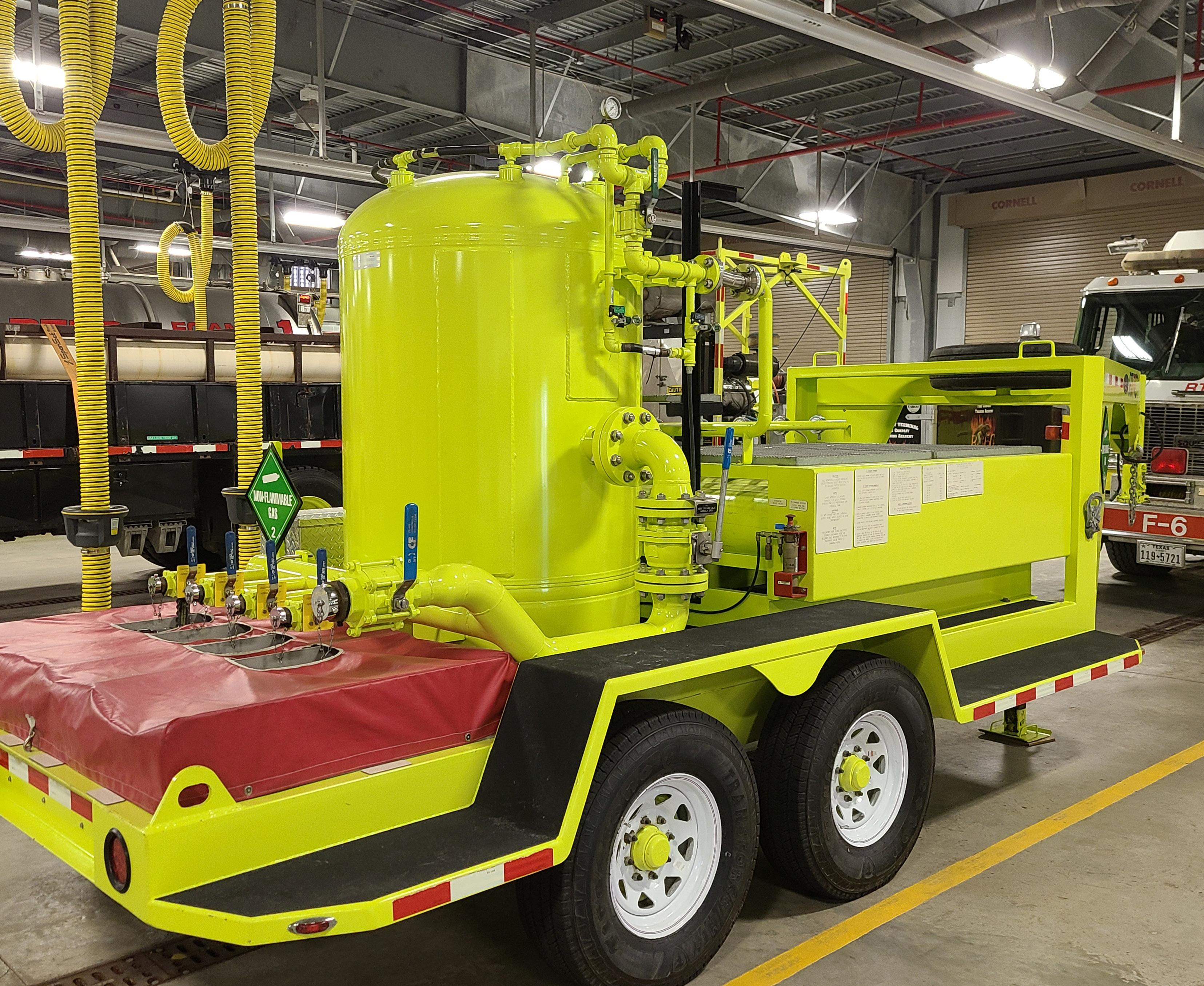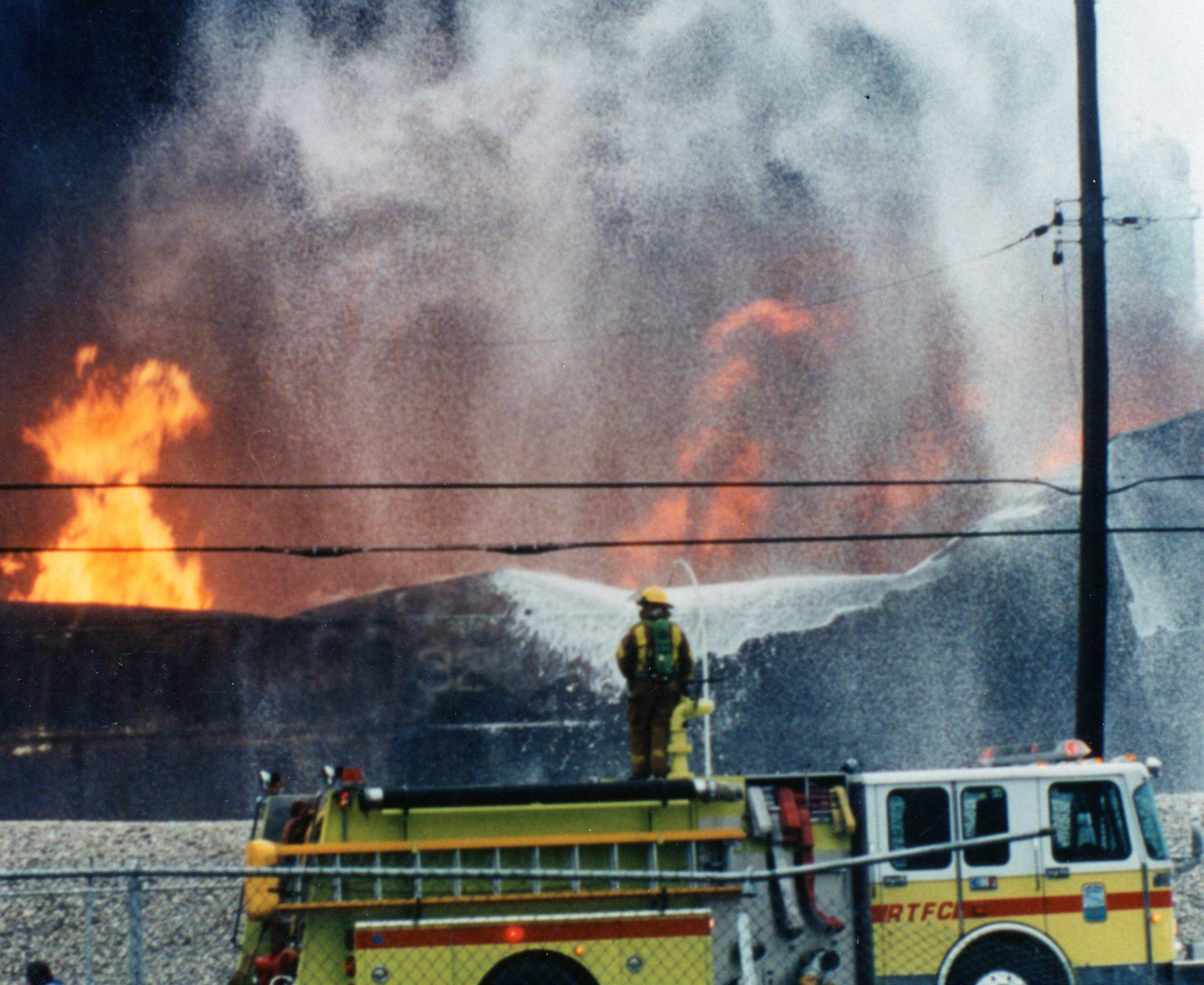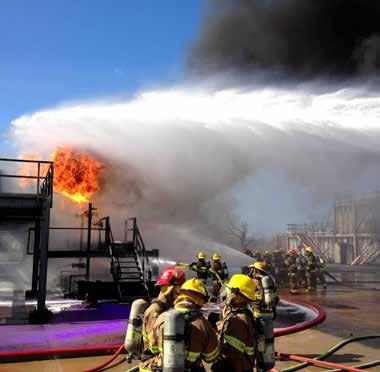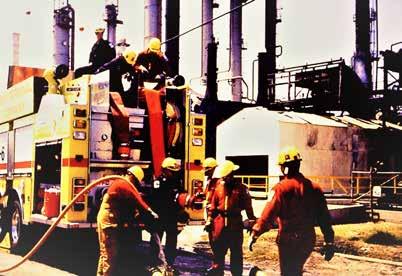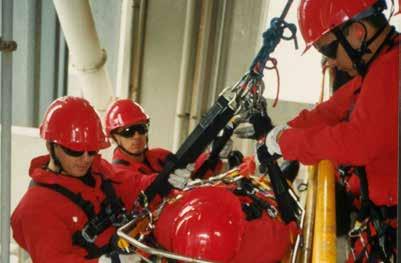THE HOTTEST JOB ON THE GULF 75 YEARS OF RTFC




 RTFC-512-DSC00032-B.JPG
RTFC-512-DSC00032-B.JPG


Copyright © 2022
Refinery Terminal Fire Company
All rights reserved. No part of this book may be reproduced or transmitted in any form or by any means, electronic or mechanical, including photocopying, recording, or by any information storage and retrieval system, without permission writing from Refinery Terminal Fire Company.
Refinery Terminal Fire Company 1001 Mc Bride Lane Corpus Christi, TX 78407 rtfc.org
CEO and Book Project Director
Brian McDonald
Fire Chief
Paul P. Swetish
Bookhouse Group, Inc.
Author
Patty Rasmussen
Editorial Director
Rob Levin
Project Management
Renee Peyton
Design
Rick Korab
Bookhouse Group, Inc. Covington, Georgia www.bookhouse.net
Printed in Korea




There is a saying that “firefighters work where the devil dances.” That rings true when thinking of the task ahead of them whenever duty calls. There is also a firefighter’s prayer that reads: “When I am called to duty, God, whenever flames may rage; give me the strength to save some life whatever be its age; Enable me to be alert and hear the weakest shout, and quickly and efficiently to put the fire out; And if according to Your Will I have to lose my life, please bless with Your Protecting Hand my children and my wife.”
ence in the lives of others and over the past seventy-five years have helped develop the Refinery Terminal Fire Company into the best-in-class and largest not-for-profit industrial firefighting organization in the US today.
This book will show the fabric of these fine fire professionals and is dedicated to all who honorably served the Refinery Terminal Fire Company for the past seventy-five years. We hope you enjoy reading it as much as the organizaiton enjoyed creating it.
Firefighters have always been a source of admiration for me.
It is truly exciting to have become a part of an organization of firefighters that have a unique purpose. After joining the organization in 2020, I became intensely aware of their level of bravery—but even more so, their expertise in the “hottest job in the Gulf Coast.” Most run from danger but they run to it. It inspires me that their “day at the office” is saving lives and taking their part in making the community a safe place with such precision. They truly make such a positive differ-
 Brian McDonald President & CEO Refinery Terminal Fire Company
Brian McDonald President & CEO Refinery Terminal Fire Company
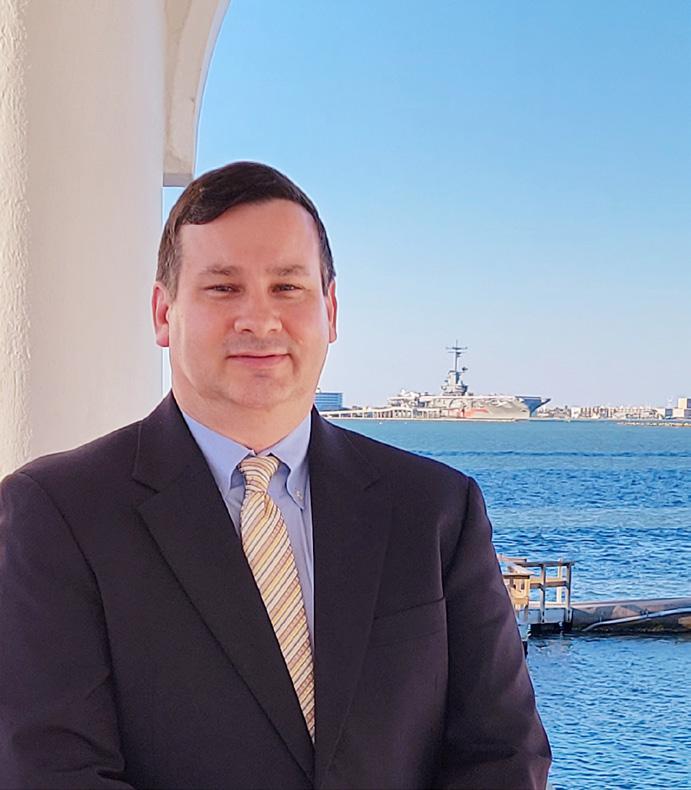
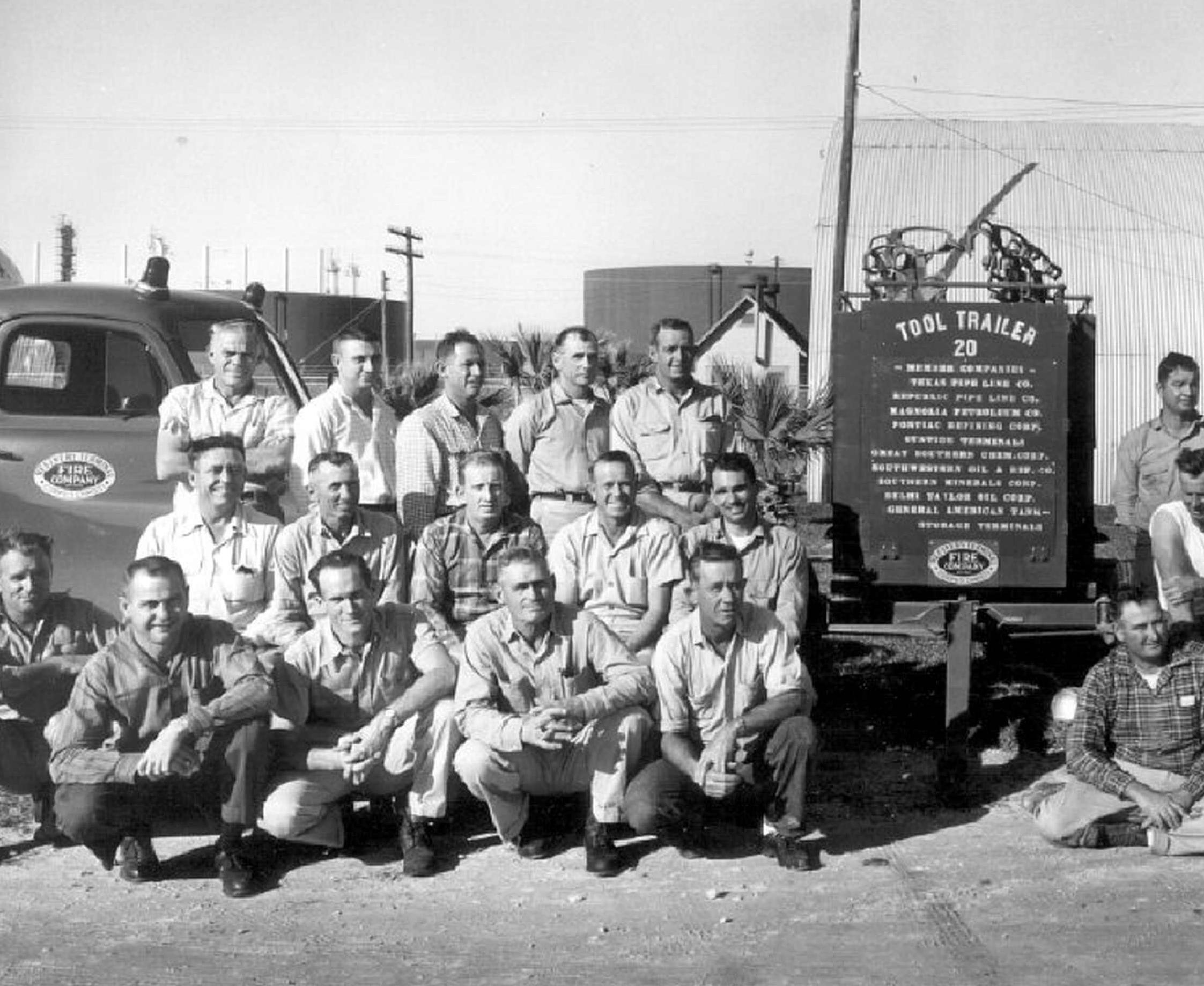
As Refinery Terminal Fire Company (RTFC) neared its seventy-fifth anniversary, the company’s leadership looked for unique ways to mark the occasion beyond the usual speeches and celebratory sheet cake. A careful search through the company’s trove of well-preserved annual reports, financial records, and black and white photos, some dating back to the late 1940s, discovered no written history of the company. This book seeks to rectify that.

Some of the few first-hand accounts that still exist in RTFC’s annual reports allude to newspaper articles, though no newspaper clippings appear to have survived. However, the company’s success does plenty of talking.
From the seed of an idea through seven-plus decades of providing industrial emergency response service and leadership to the refinery and petrochemical industries and the Corpus Christi community, this book is a testament to RTFC’s past and present, and an opportunity to glimpse its future. It preserves the memories and honors the service of the firefighters and employees who helped build this extraordinary company.

THE HOTTEST JOB ON THE GULF 75 YEARS OF RTFC
CHAPTER ONE
It was 1948, and the mission was simple. Oil companies with refineries and oil storage terminals in the area served by the Nueces County Industrial District Harbor facilities would pool their financial resources to create a corporation that would organize and maintain a volunteer fire company to protect the members’ refineries and terminal tank farms in or near Corpus Christi. The reason was also devastatingly apparent after the horrifying disaster in Texas City, Texas, just one year earlier.
A port city in the Houston metropolitan area, Texas City, became a boomtown as World War II wound down and the postwar era began. But the hustle and bustle came to a terrible halt on the morning of April 16, 1947, when the S.S. Grandcamp, a ship loaded with ammunition, sisal twine, machinery, and 2,300 tons of ammonium nitrate fertilizer, caught fire and blew up.
The massive explosion caused a mushroom cloud that rose two thousand feet into the air. A twenty-foot high tidal wave—a toxic mix of water, chemicals, and diesel fuel—crashed over the docks and along the waterfront filled with people, homes, and businesses. Debris rained down on the city and its inhabitants,
On April 8, 1948, the Corpus Christi Refinery Terminal Fire Company was officially incorporated. Nine member companies comprised the company—the Barnsdall Oil Company, Magnolia Petroleum Company, Phillips Petroleum Company, Pontiac Refining Company, Republic Pipe Line Company, Southern Mineral Corporation, Southwestern Oil and Refining Company, Taylor Refining Company, and Texas Pipe Line Company.
rial. Business and civic leaders in port communities like Corpus Christi with a similar industrial base, read the tragic news reports about the destruction at Texas City. They knew it was up to them to develop a strategy that married day-to-day fire protection needs with a comprehensive disaster plan. And they knew they had to invest in training the firefighters and purchasing the equipment necessary to fight the complex types of fires they were likely to see.
pipelines, and storage tanks, igniting secondary fires. Later that night, a second ship also carrying ammonium nitrate, the S.S. High Flyer, also blew up. The final death toll was set at 581, with approximately thirty-five hundred injured—many grievous.
The Texas City Volunteer Fire Department fought the blaze, losing twenty-seven of its twenty-eight-man department in the initial explosion. At the time of the Texas City incident, warning labels on hazardous materials were not required. There weren’t training mandates for handling hazardous mate-
In a letter dated May 19, 1947—just one month after the Texas City Disaster—J.T. “Jim” Dickens, superintendent at the Refining Division of the Magnolia Petroleum Company in Corpus Christi, invited C.R. Lord, chief engineer at Sinclair Refining Company, to a meeting of the Oil Committee at Magnolia Terminal on Port Avenue. There are no records from the meeting. In a second letter, dated June 10, 1947, Dickens requests information from Lord about what fire equipment Sinclair Refining Company has on hand. On July 24, 1947, Dickens sent a rough draft of a suggested charter for a firefighting company. He asked those in receipt to meet at his office on July 28 to discuss the matter further and on November 11, 1947, Dickens mailed a letter to Lamar Turner, manager of Turner Oil Company, inviting him to a meeting on November 18 to discuss “permanent organization of the Corpus Christi Refineries—Terminals Firefighting Company,” and invited members of organization and cost committees as well.
On April 6, 1948, the Corpus Christi Refinery Terminal Fire Company was officially incorporated. Nine member companies comprised the company—the Barnsdall Oil Company, Magnolia Petroleum Company, Phillips Petroleum Company, Pontiac Refining Company, Republic Pipe Line Company, Southern Mineral Corporation, Southwestern Oil and Refining Company,
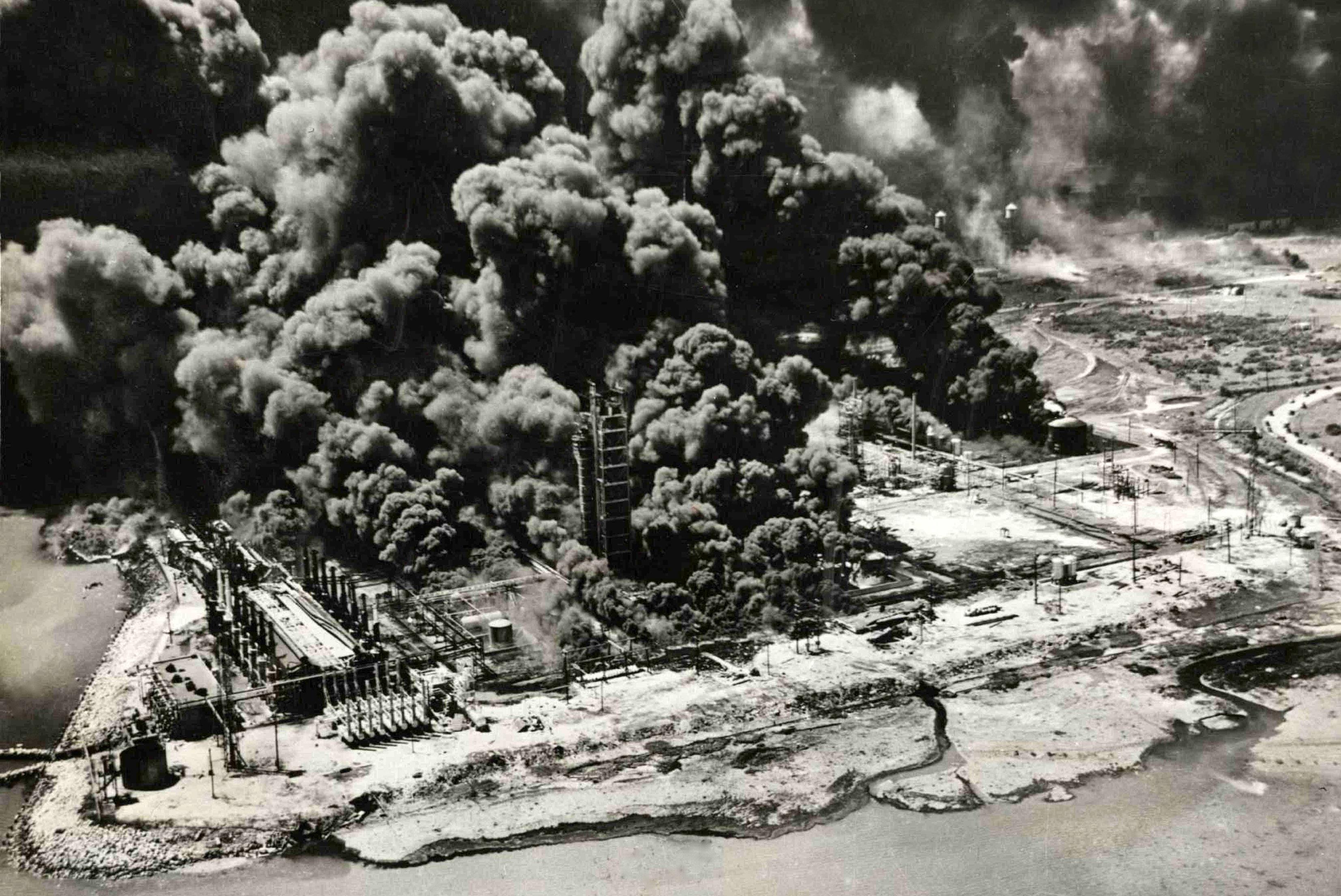

Taylor Refining Company, and Texas Pipe Line Company.
RTFC founders opted to form a non-profit corporation with members paying assessment fees (capital and operating) based on a company risk assessment, and later other factors such as the company’s size and type of industry. Members’ assessment fees determined the percentage of votes they have at the company’s annual meeting, and that’s still the case, with every member receiving the same level of fire protection service.
In addition to J.T. Dickens serving as president of the board of directors of RTFC in 1948, J.L. Sewell (Taylor Refining Company) served as vice president, R. R. Reed filled the secretary’s position, and F.P. Peterson, Jr. (Southern Minerals Corporation), handled the treasurer’s duties. Other members serving on the board were H.E. Ammerman, G.W. Stephenson, W.H. Lester, and W. C. Montgomery (both of Texas Pipeline Company) and C.H. Clark (Southern Minerals Corporation), also serving as the company’s attorney.
According to the first annual report, “one Special Committee and four Standing Committees were appointed by the president, namely: Executive, Purchasing, Membership, Personnel and Training, and Survey.” The board held nine meetings during its first year of operation. Faded onionskin copies of letters attest to the difficulty they had in convening even the most dedicated board members to discuss topics from the appointment of committee members to the approval of hiring the fire chief to myriad questions about insurance.
RTFC did hire a full-time fire chief, Roy Harrison, on July 1, 1948. His duties included “the training of the men, the maintenance of the equipment, inspecting and reporting the needed changes on member companies’ property insofar as it pertains to fire hazards and if the change has any bearing on the efficient

operation of the Fire Company.” The company also paid thirty volunteer firemen who were employees of member companies. They received $20 per month and an additional $2.50 per hour when fighting fires. RTFC provided, and required, company-sponsored training for all firefighters.
Joe Almaraz, director of environmental safety at Valero, has served as a member of the board of directors since 2007, and as RTFC’s chairman of the board since 2011. Almaraz says actions
taken by past boards positioned the company for success and the current board is following in their footsteps.
“We’re approaching [growth] with the mindset that member’s services come first, [providing] first class service and equipment available for them and, if we meet those criteria, then we can evaluate future opportunities,” Almaraz says. “It doesn’t mean we won’t grow; it just means we’ll be very careful in growing. Not taking on too much that we can’t support our members.”
When Assistant Fire Chief David Martinez gives his safety orientation to a recruit class, it’s serious, but perhaps not in the way recruits might imagine, with dramatic tales of danger and rescue. n “I talk to them about what’s expected,” says Martinez, in a quiet voice. “We saw something in you that we would like to embrace and make part of this family. There’s a reason why you’re here and whatever reason it is, you need to make the best of it, don’t waste it. We are offering you a career and it’s up to you to make a choice and stay focused. At the end of the day we all have the same goal, to go home safely.” n Martinez believes in building a foundation, like an unshakeable root system, of absolute trust between recruits, firefighters, and officers. He talks about the “circle of safety,” taking care of the person to the right of you and to the left of you at all times, and the importance of speaking up if there’s something wrong, and the value of learning from mistakes—a teaching technique he calls “Blast from the Past.” n Each month, Martinez pulls a safety incident from the files. It could be anything—an equipment failure, injury case, or miscommunication during a fire call and talks to the company about it either in person or virtually. n “We break down why the incident happened, what to anticipate before it
happens, and ways to prevent it,” he says. “We talk about what developed from the incident, why a procedure is written, or why special training is needed. We’ll talk about how the industry has changed for the better and the change in RTFC as well.” n RTFC’s regular discussions are to keep safety top-of-mind for everyone from the fire chief to the newest recruit. It’s all about momentum. n “Situation awareness is the everyday focus that occurs by anticipating, recognizing, and reacting to emergencies and everyday work,” says Martinez. “The more we understand our mistakes from the past, the more we can eliminate the problems in the future. We first have to accept our failures, learn and prevent mistakes and have great supporters like our Board of Directors in order to move forward. The people in RTFC believe and strive to be the best and to make a difference in safety because our clients, the community, and their families depend on them to protect so all make it home safely at the end of the day.”


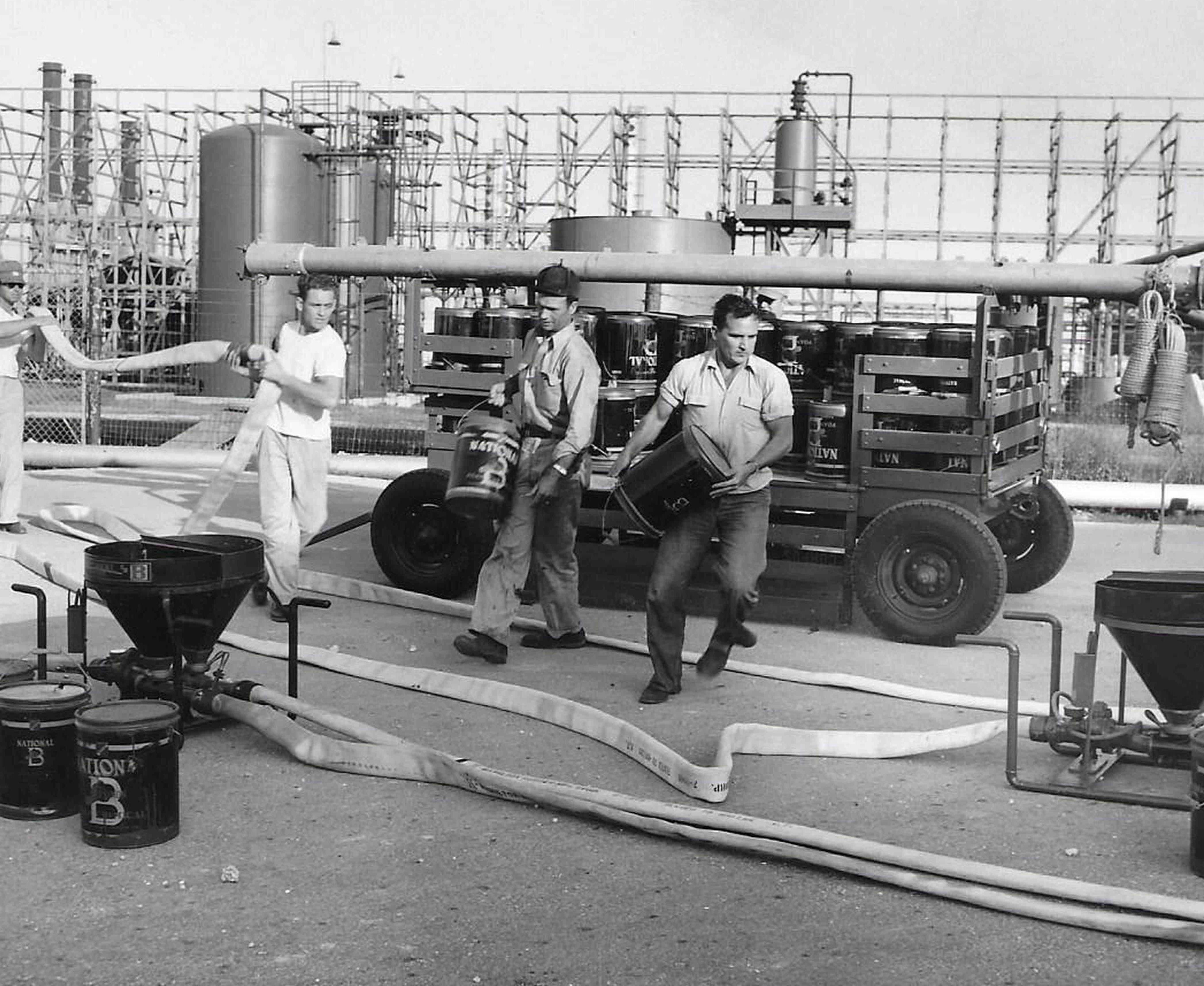
Early training for RTFC’s thirty firefighters consisted of a healthy dose of “fundamentals.” The training began in the form of “blackboard lectures.” The firefighters studied “equipment and application of such by dry runs on the coupling up of hose, pumpers, and foam chambers.”
RTFC owned a practice field along an “all-weather road” (presumably paved) near a fire main on the Nueces County Navigation District’s property. The board had a standard fire plug installed and three earthen pits dug; one represented a ditch, and the other covered a large area on the other side of the largest pit. Additional training equipment included a steel tower, five feet wide by forty feet high, to represent the side of a tank.
Firefighters practiced hooking up a complete unit—pumper, foam-generator, and foam chamber—along with the necessary hose over the practice field tower. Later, to give every firefighter experience of seeing the action of foam on an oil fire, they did the same practice with fire in the pit.

Compared with today’s RTFC, the company’s initial training might seem simplistic, but Assistant Fire Chief Riley Maxson, training coordinator at RTFC’s state-of-the-art Training Academy located on Carbon Plant Road (now RTFC Road), was pleased when he heard about the program.
“I’m glad to see that they had that kind of mentality to have that kind of initiative, to do that kind of training before it was required,” Maxson says. “They didn’t have the standards we have now.”
Maxson is right. The National Fire Protection Association (NFPA, an international organization that sets published codes and standards intended to minimize the possibility of fires and
other risks) was established in 1896, and many safety concerns weren’t regulated until much later when the Occupational Safety and Health Administration (OSHA) was founded in 1971. Even then, it took years before OSHA safety guidelines made it to the refining and petrochemical industries. It was RTFC’s emphasis on safety and insistence on high-quality continuous training of volunteer personnel from the outset that set them up as an industry leader.
“RTFC was actually performing above and beyond what I believe anybody’s else’s standard training would’ve been at that time,” he adds. “That definitely set the foundation for why we train.”
When RTFC hired new Fire Chief, E.G. Mehlburger and Assistant Fire Chief Riley Rose in 1949, the two men established the Personnel Training Program. They invited each member company to send maintenance and operating employees to participate in a six-week course that started September 1, 1949. The course covered a range of topics and activities from the basics of equipment and apparatus to erecting towers and putting out fire with foam. By the following March, sixty-one men had completed the course. The training helped fill later volunteer ranks for RTFC member companies.

In subsequent years, firefighters took first aid courses and in 1960, the company instituted an eight-hour training course for employees of member companies. They provided protective clothing to firefighters, allowing them to get closer to fires when necessary. These personal protective equipment (PPE) purchases made a significant impact on the way firefighters approached the job.
In 1964, the company acquired a new and improved training field, but it wasn’t until the company’s move to its headquarters at 4802 Up River Road (the “Old Main Station”) in 1975 that training received a substantial boost. In 1978, RTFC leased a

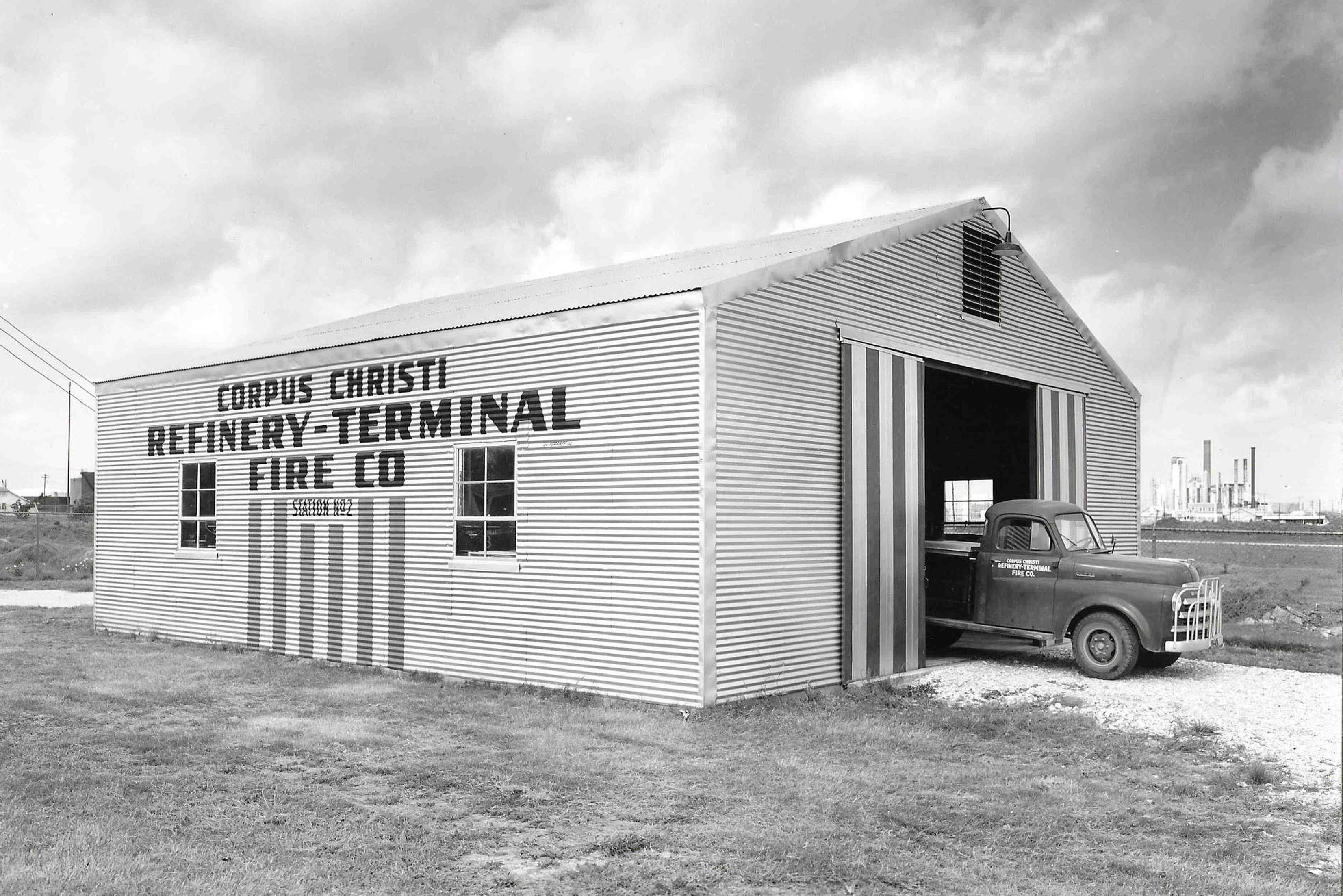
3.5 acre site on Renfro Road, west of the Sun Petroleum Products Refinery, to serve as a new training field. addition to more training space, Firefighters began receiving training and call-out pay which company leaders acknowledged did wonders to boost firefighters’ morale. The new site also provided space to offer training services and special training for local fire companies and other interested companies.
RTFC has come a long way since 1948 when the only vehicle the company owned was a single Dodge pick-up truck. At that point, all the firefighting equipment was mounted on trailers. Other equipment listed in that first annual report included three Hale OCD fire pumps with trailer and suction hose; one Champion fire pump with trailer and suction hose; a four-wheeled trailer complete with two National portable foam towers; an Ace four-wheel trailer with a bed for carrying foam powder; 2,000 feet of two-and-a-half-inch Underwriters fire hose; another 2,000 feet of mildew proof fire hose with forty rocker lug couplings; pump test equipment including pipe, valves, fittings; and miscellaneous items such as firefighter’s suits, tools and hose carts. Their equipment list also included a four-drawer legal size filing cabinet and an aluminum company seal. The price tag for RTFCs equipment inventory came to a whopping $16,159.53. The list didn’t even fill one typed page.
Compare that to today’s inventory of apparatus and equipment that includes foam pumpers, foam towers, foam tenders, flat bed trailers and skid pumps, a communications vehicle with a telescoping mast and satellite internet capability and tractors.
RTFC owns a host of trailers for hauling dry chemical and diesel, trailers for trench and high angle rescue, a hazardous material trailer, gooseneck trailer, and a boom trailer. From hoses and foam guns to communications systems, the investment RTFC makes in the best possible equipment is considerable.
RTFC ordered its first fire truck in 1958 after Fire Chief Mehlburger came onboard in 1949. It was designed by National Foam Systems with an Aer-O-Foam proportioning system mounted on a GMC truck chassis. It turns out, this big-ticket purchase for the company—the truck and foam system together cost $7,235.34—was a wise investment. According to the 1959 annual report, the truck had an estimated life of ten years, and the foam system was expected to last about fifteen years. However, according to reports, the original fire truck was still in use in the mid-1980s.
A used fire boat was also in use in RTFC’s early history (1961). The reconditioned vessel had four pumps equipped with proportioners to handle 3 percent mechanical foam. The fire boat had two 320-gallon foam tanks and two 400-gallon per minute monitors.
RTFC ordered its first fire truck in 1958 after Fire Chief Mehlburger came onboard in 1949. It was designed by National Foam Systems with an Aer-O-Foam proportioning system mounted on a GMC truck chassis. It turns out, this bigticket purchase for the company—the truck and foam system together cost $7,235.34—was a wise investment. According to the 1959 annual report, the truck had an estimated life of ten years, and the foam system was expected to last about fifteen years. However, according to reports, the original fire truck was still in use in the mid-1980s.
